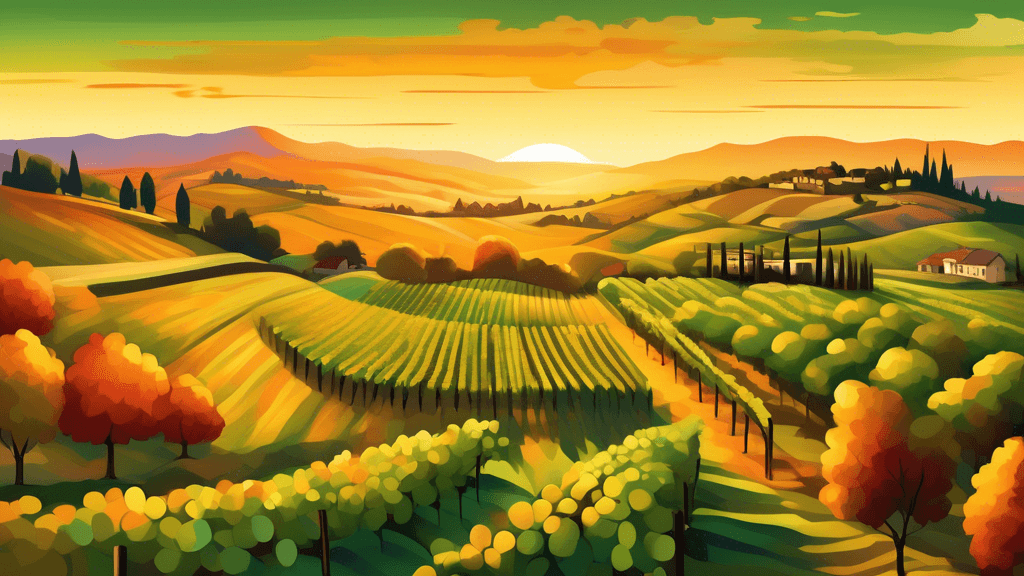
Seasonal Shifts: Exploring the Dynamic Landscapes of Vineyards
Share
The Dynamic Beauty of Vineyard Landscapes Across Seasons
Have you ever wondered how the shifting seasons transform the landscapes of vineyards, influencing both the character of the place and the wine produced? Vineyards, with their meticulously lined rows of vines, stand as a direct reflection of the interplay between nature and agricultural practice. Each season paints these landscapes with a unique palette, significantly impacting the viticultural methods and the resulting wine quality. Let’s embark on a seasonal exploration of these picturesque environments.
Spring: Awakening and Rebirth
Spring in a vineyard represents a period of intense awakening and growth. As the temperatures begin to warm up and the frost of winter dissipates, vineyards burst into life. Buds swell and eventually burst, setting the stage for future grape growth. But what makes this period critically important to vintners?
- Growth Cycle Kickoff: The initiation of the growth cycle is vital as it sets the tone for the year. Vine health at this stage is crucial for robust development throughout the year.
- Frost Risk: Although it’s a period of beauty, there's always the risk of spring frosts. These can be detrimental, potentially damaging the tender buds that would develop into fruit.
Moreover, spring is a busy season for vineyard managers, involving activities such as trellising and canopy management to ensure optimal vine growth and fruit exposure. This careful management is critical in creating the unique environmental conditions each grape variety needs to thrive.
Summer: Growth and Vitality
As we venture into the summer months, vineyards reach their peak in terms of vibrant life and lush greenery. The increase in sunlight and warmer temperatures spur significant vegetative growth and the important phase of fruit set, where flowers start to turn into actual grapes. This period is characterized by:
- Canopy Management: A crucial activity to manage the vine's exposure to sunlight, which is vital for optimal photosynthesis.
- Water Stress: Vineyards might face the challenge of water stress during hot summers, which, while stressful for the vines, is sometimes beneficial for concentrating the sugars and flavors in the grapes.
Viticulturalists often say, Great wine is made in the vineyard, and summer is where much of this magic happens - with both risks and rewards at play.
Autumn: Harvest and Transformation
The arrival of autumn is often heralded as the most picturesque and active time in a vineyard. This is when the grapes reach their full maturity and the harvesting begins. The landscape transforms into a rich tapestry of colors - from lush greens to deep ambers - signaling that it is time to reap the fruits of a year's labor. As the leaves begin to change color, the entire vineyard presents a breathtaking scene of vibrant hues. This period’s significance includes:
- The Harvest: Timing the harvest is critical; picking the grapes at the right moment ensures optimal sugar levels and acidity, crucial for high-quality wine production.
- Climatic Influences: The weather plays a pivotal role during this season. An unexpected rain can change the course of the harvest, affecting the yield and quality of wine.
Ambitious and exacting, the harvest season is a testament to the meticulous care taken throughout the year and is often a celebration of both the bounty and the challenges the vineyard has endured.
Winter: Dormancy and Preparation
As the chill of winter sets in, vineyards enter a dormant period. The once vibrant rows now stand bare, and the vines conserve energy to survive the low temperatures. While the vineyard might appear lifeless, many crucial activities are still taking place:
- Pruning: This is perhaps the most essential task during the winter. Pruning helps control the shape and productivity of vines for the following seasons.
- Soil Maintenance: Soil care through cover cropping or organic amendments ensures the health of the underground ecosystem that supports vine growth.
Winter may seem quiet, but it is a period of intense planning and preparation for the coming cycle. Here, the foundation is laid for the upcoming seasons of growth and production.
Conclusion
Following the rhythm of nature, a vineyard’s seasonal shifts not only reflect changes in the landscape but also dictate the practices of sustainable viticulture. These transformations are vital for both the grapevine life cycle and the resultant wine quality, embodying a perfect balance between agriculture and the artistry of winemaking.
Are you inspired to witness these seasonal transformations yourself? Whether you're a wine enthusiast or a lover of natural beauty, consider visiting a vineyard across different times of the year. Each visit offers a new perspective and a deeper appreciation for both the science and art of viticulture.
Remember, every season tells a story, and the vineyards are where these stories unfold. Let us embrace the pace of nature, explore these dynamic landscapes, and support sustainable agricultural practices that honor earth's natural rhythms.





